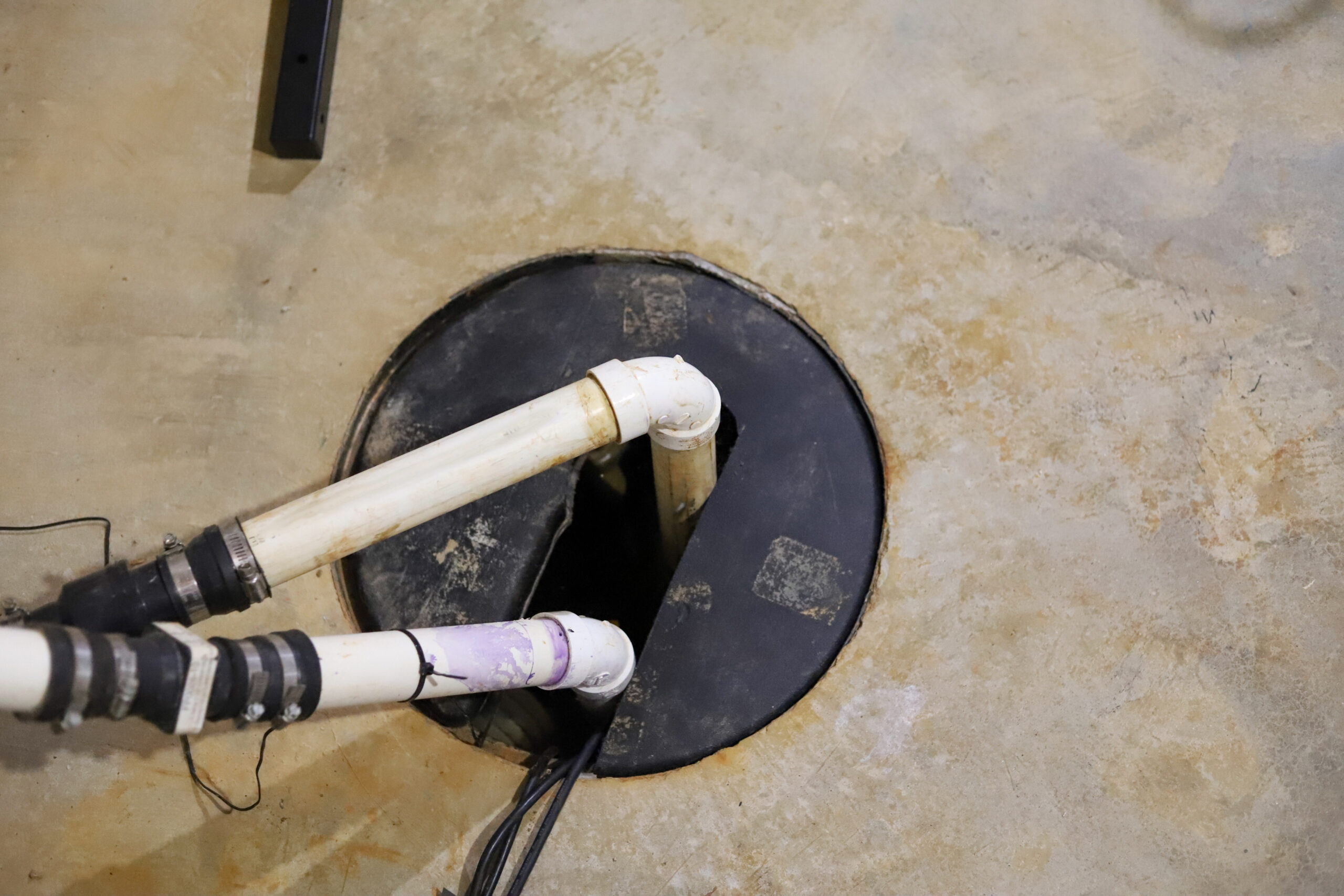Tested Methods for Servicing a Sump Pump
Tested Methods for Servicing a Sump Pump
Blog Article
We have noticed this post on Steps to Cleaning Your Sump Pump Properly directly below on the web and figured it made good sense to relate it with you on my blog.

Sump pumps are crucial parts in numerous homes, specifically in areas vulnerable to flooding or too much wetness. They assist stop water damage by efficiently getting rid of excess water from cellars or crawl spaces. However, like any other device, sump pumps require routine upkeep to ensure they operate successfully when required one of the most. Cleansing your sump pump is an essential part of its upkeep, and comprehending exactly how to do it effectively can conserve you from costly repairs and prospective catastrophes.
Introduction
Keeping a tidy sump pump is crucial for its proper performance and durability. Ignoring this necessary task can lead to clogs, breakdowns, and eventually, water damage to your residential or commercial property. Consequently, learning how to cleanse a sump pump is vital for house owners who count on these gadgets to maintain their cellars dry and secured.
Recognizing the Sump Pump
Prior to diving right into the cleansing process, it's important to have a basic understanding of how a sump pump functions. Generally mounted in a pit or basin listed below the cellar floor, a sump pump includes numerous key elements, consisting of a pump, a float switch, and a discharge pipeline. When water collects in the pit, the float button turns on the pump, which then pumps the water out via the discharge pipeline, away from the building's structure.
Signs of a Dirty Sump Pump
Understanding when your sump pump requires cleansing is essential for stopping prospective breakdowns. Some usual indicators that indicate a filthy sump pump include unusual sounds throughout procedure, lowered water flow, and visible particles in the pit. If you notice any one of these signs and symptoms, it's necessary to clean your sump pump without delay to avoid any more concerns.
Getting ready for Cleaning
Before you start cleaning your sump pump, it's important to take some security precautions. Begin by turning off the power to the pump to stay clear of any electrical mishaps. Additionally, use ideal protective gear, such as gloves and safety glasses, to safeguard on your own from dirt, particles, and potential microorganisms.
Detailed Overview to Cleansing a Sump Pump
Turning off the Power
Begin by disconnecting the power supply to the sump pump to prevent any type of mishaps while cleansing.
Eliminating Debris and Dirt
Use a pail or an inside story to eliminate any kind of visible debris, dirt, or debris from the sump pit. Dispose of the particles effectively to prevent it from obstructing the pump or the discharge pipe.
Cleaning up the Pump and Float Change
Once the pit is free from debris, thoroughly get rid of the pump from the pit. Inspect the pump and the float button for any kind of signs of damages or wear. Make use of a soft brush or cloth to cleanse the surfaces and get rid of any kind of built up gunk.
Flushing the System
After cleaning the pump and float button, flush the sump pit with tidy water to get rid of any kind of remaining dust or sediment. This will aid make certain that the pump operates smoothly and successfully.
Looking For Appropriate Functioning
Before re-installing the pump, do a fast examination to make certain that the float button activates the pump correctly. Put some water right into the sump pit and observe the pump's operation. If every little thing is operating correctly, you can rebuild the pump and reconnect the power supply.
Upkeep Tips to Keep Your Sump Pump Clean
Along with regular cleansing, there are several upkeep tips you can follow to keep your sump pump in ideal problem:
Final thought
Cleaning your sump pump is a critical aspect of its upkeep and guarantees that it operates successfully when you require it one of the most. By following the actions described in this overview and including normal upkeep right into your regimen, you can prolong the life-span of your sump pump and safeguard your home from water damages.
6 STEPS ON HOW TO CLEAN A SUMP PUMP PROPERLY
UNDERSTANDING SUMP PUMPS
Your sump pump plays a crucial role in protecting your home by managing and removing excess water. It primarily functions as a “shield”, guarding your basement against the damaging effects of water accumulation. The pump is housed in a sump pit in the lowest part of your basement, and its job is to pump out any water that collects there.
During heavy rainfalls or when snow melts rapidly, water can infiltrate your basement, posing potential risks like flooding, structural damage, and harmful mold growth. Here, the sump pump springs into action, pumping out the intruding water and directing it away from your home.
SAFETY FIRST
Before cleaning, remember to prioritize safety. Disconnect the sump pump from the power source to prevent any accidental electric shocks. Also, wear sturdy gloves to protect your hands from any sharp or dirty components within the pump.
REMOVE THE SUMP PUMP
After ensuring your safety, the next step is to remove the sump pump from its pit. Doing this might require careful maneuvering as you don’t want to damage any pump components. Once removed, clean the sump pit to remove any accumulated debris or sludge.
INSPECT THE PUMP
Inspect the pump for any visible signs of wear or damage. Check the power cord, float switch, and impeller housing. If any components look worn out or damaged, consider replacing them to ensure optimal performance.
CLEAN THE PUMP
Thoroughly clean the pump with warm, soapy water. Make sure to rid it of any dirt, gravel, or other debris that might impede its performance. You can use a toothbrush to clean the small, hard-to-reach parts of the pump.
REINSTALL THE SUMP PUMP
Reinstall the pump into the sump pit Make sure it’s positioned correctly to remove the water effectively Once it’s back in place, reconnect it to the power source TEST THE PUMP
Finally, pour some water into the pit to ensure the pump works correctly. It should start automatically and begin pumping out the water; if it doesn’t, check the power source and the positioning of the pump.
Remember, while cleaning your sump pump is an essential part of home maintenance, hiring a professional plumber for a thorough inspection and cleaning at least once a year is also important. This will ensure that your pump is in optimal condition, ready to protect your home from potential water damage.
BEST PRACTICES FOR CLEANING SUMP PUMP DISCHARGE PIPES
Regular Inspection: Regularly inspect your discharge pipes, especially during heavy rainfall or snowmelt periods. Look for any signs of blockage or damage. Early detection of problems can prevent serious issues down the line. Periodic Cleaning: Over time, sediment and debris can accumulate in the discharge pipes, impeding the flow of water. Regular cleaning helps keep the pipes clear and functioning efficiently. You can use a high-pressure water jet to effectively clean the pipes. Insulation During Winter: In colder climates, discharge pipes can freeze, blocking the outflow of water. Protect your discharge pipes from freezing temperatures by insulating them with foam pipe insulation. This will ensure the sump pump can continue to discharge water even in freezing conditions. Proper Positioning: The discharge pipe should be positioned to direct water away from your home’s foundation. Improper positioning can lead to water seeping back into the basement. Ensure the pipe is long enough and angled correctly. Installation of a Check Valve: A check valve prevents water from flowing back into your sump pit after the pump has pushed it out. Installing a check valve helps maintain the efficiency of your sump pump and reduces the risk of flooding. Minimize Pipe Turns: Every curve or turn in the discharge pipe can decrease the efficiency of water flow. By minimizing turns and bends in your discharge pipe, you can increase the efficiency of your sump pump. https://www.fullspeedplumbing.com/how-to-clean-a-sump-pump-properly9999/

We are very inquisitive about and I hope you appreciated the post. Sharing is nice. You just don't know, you may just be helping someone out. I praise you for being here. Return soon.
Click Here Report this page